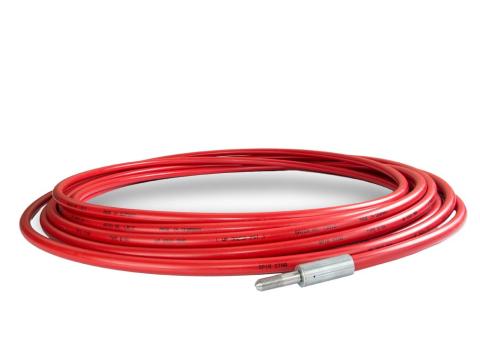Ultra High pressure Resin Hose is a kind of hose that can bear high pressures. It is commonly used in hydraulic, oil, and gas applications. There are many characteristics that can extend the hose's service life. The characteristics of this hose are discussed below.
how to prolong the service life of ultra-high pressure resin hose
If you want to prolong the life of your ultra-high pressure resin hose, you need to take a few steps. The first is to maintain it properly. High chlorine levels can damage the resin and cause it to stop working properly. It is best to keep chlorine levels between 0.2 and 0.5 ppm. The resin will begin to degrade prematurely if it is higher than this.
Protect it from harsh environments. Store the hose in a cool and dry place. Avoid exposure to UV radiation and other substances that can cause the hose to fail. Keep the ends sealed to stop dirt and corrosion leaking through.
Advantages of ultra high pressure resin-hose Assemblies
Ultra high pressure resin hose assemblies are made from the highest quality thermoplastic materials. For additional strength, they are reinforced with eight layers high-tensile spring wire. These hoses can be purchased in complete hose assemblies with many connection types. They can be used to clean machinery and equipment, as well as remove substances from surfaces or airstrips. They can withstand pressures up to 55,000psi making them ideal for high pressure applications.
Ultra high pressure resin hose assemblies also offer flexibility. They are easy-to-install and have low permeability, making them ideal for a wide range of applications. They are also resistant to oil, solvents, and chemicals. They are also lightweight and won't easily deform.
These hose assemblies are also less expensive than traditional rubber hoses. They require less maintenance and last longer. They can also be customized to fit your needs. High-performance 2022N hoses, for example, have a CAD-based design and high-quality virgin resin. They also have a tough construction. They also feature a two-braided fitting technology, which offers high pressure capability and the right applications properties. The hoses feature a white silicone cover to ensure a smooth, esthetically clean appearance and maximize flexibility.
Another advantage of ultra high pressure resin hose assemblies is their resistance to harsh chemicals and corrosive media. They are inert to most commercial chemicals, including alcohols, solvents, and coolants. They are also suitable for applications that require extreme temperatures.
Parameters for ultra-high pressure resin pipes
To design a high-pressure resin hose, you must be aware of the various parameters that can affect the flow rate. The flow rate is affected by several variables, including the viscosity and dry-stack permeability of the resin as well as the pressure gradient across the part. Darcy's Law explains the relationship between these variables. This law is not practical but it provides a mental framework.
The effective resin pressure is directly affected by the feed-pot height. The feed pot should be low to mid-level with the part, reducing the additional pressure caused by gravity. This will create a negative pressure on the resin which will result in a compact laminate. Similarly, a feed-pot that is too high above the part will increase resin pressure, creating pooling and significant differences in part thickness.
A high-pressure resinhose can withstand pressures of up to 20,000 psi and a continuous range of pressures as high as 50,000 psi. Those pressures can also be applied to a variety of applications, including mining, oil field exploitation, transportation, and injection molding machinery. It is also suitable for high-pressure pulse applications, including the use of water-based and petroleum-based liquids.
The gas permeability of polymeric materials under high pressure has been measured in devices. However, due to the difficulty of measuring gas permeation, only a few materials have been studied. Zhang et. al. conducted a study on hydrogen gas permeability in polyamide 6 at different temperatures and pressures. Zhang et al. found that an inorganic filler could improve the gas barrier properties.

